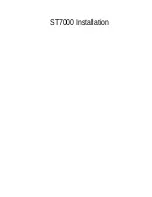
PROLIGHTS - SmartBat
PlusG2
03
Charging
• Refer to your product’s user manual and/or online help for detailed information about
charging its battery. The latest version of your Prolights product user manual is avail
-
able at www.prolights.it.
• Avoid charging if the projector has any damage, malfunction, tampering or signs of
moisture inside.
• Do not charge unattended.
•
Always charge with its packing/flight-case open.
• Always follow the charging instructions provided.
•
Only charge the battery mounted in the fixture with the original charger. Do not use
a third party charger.
• It is recommended to charge at a temperature between 15°C and 35°C.
• Do not recharge the product longer than required, it will affect the battery capacity
and can cause overheating.
• For the IP product you need to make sure that the projector housing and charging
connector are dry without any moisture.
Storage
•
Store the product in an airy, dry place, and away from any inflammable object in order
to ensure optimum storage conditions for the battery.
•
Do not expose the battery projector to fire or heat.
• Charge or discharge the battery to approximately 50% of capacity before storage.
• Charge the battery to approximately 50% of capacity at least once every six months.
• Store the product projector at temperatures between 5 °C and 20 °C (41 °F and 68
°F).
Handling Precautions
• Do not disassemble, crush, or puncture a battery.
• Do not short the external contacts on a battery.
•
Do not dispose of a battery in fire or water.
• Do not expose a battery to temperatures above 60 °C (140 °F).
• Avoid exposing the battery to excessive shock or vibration.
• Do not use a damaged battery.
•
If a battery pack has leaking fluids, do not touch any fluids. Dispose of a leaking bat-
tery pack (see Disposal and Recycling in this document).
•
In case of eye contact with fluid, do not rub eyes. Immediately flush eyes thoroughly
with water for at least 15 minutes, lifting upper and lower lids, until no evidence of
the fluid remains. Seek medical attention.
Transportation
• Always check all applicable local, national, and international regulations before trans
-
porting a Lithium-Ion battery.
•
Transporting an end-of-life, damaged, or recalled battery may, in certain cases, be
specifically limited or prohibited.
Disposal and Recycling
•
Lithium-Ion batteries are subject to disposal and recycling regulations that vary by
country and region. Always check and follow your applicable regulations before dis
-
posing of any battery. Contact your local battery recycling organisation.
•
Many countries prohibit the disposal of waste electronic equipment in standard waste
receptacles. Place only discharged batteries in a battery collection container.
•
Use electrical tape or other approved covering over the battery connection points to
prevent short circuits.
Содержание SmartBat PlusG2
Страница 43: ......






































